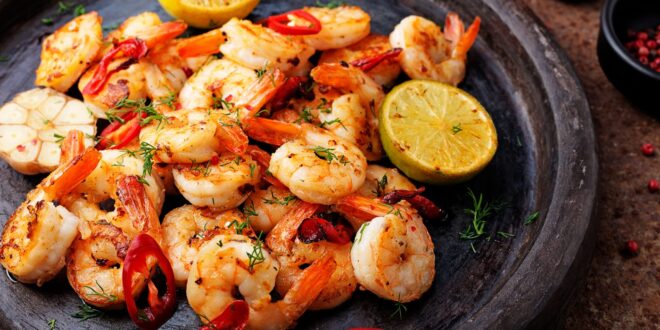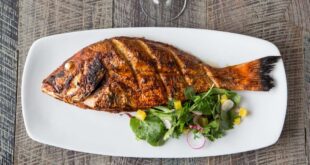Shrimp have undoubtedly become the favorite seafood in much of the world. They can be found in numerous dishes of various national cuisines, all of which are delicious.
You may be surprised to know that there are more than 2000 species of shrimp, not only the pink one you usually find in fried rice. The smallest species measure less than a third of an inch (a few millimeters), while the largest reach about 8 inches (about 20 centimeters). These largest ones are often called “prawns”. Some species of shrimp live in the sea, others in fresh water. They are omnivorous; some are scavengers or feed on parasites that infest other aquatic animals.
The most fished crustaceans
Crustaceans (from the Latin word crusta ‘crust, shell’) are the zoological group to which shrimps, prawns, lobsters, crabs, and crayfish belong. Shrimps are the most widely fished crustaceans in wild waters and the most widely farmed in aquaculture for food. In fact, there are many shrimp farms around the world.
Of the nearly two thousand species of shrimps and prawns known to science today, only about twenty are of commercial importance and are usually used as foodstuff for humans.
The body of shrimps and prawns, like that of other crustaceans, is divided into two clearly distinguishable parts: the cephalothorax, commonly called the “head”, and the abdomen, which people call the “tail”. Shrimps and prawns are different from other crustaceans by their slender, somewhat transparent, and laterally flattened bodies, their long whip-like antennae, and their fan-like tails. They can swim backward when fleeing from danger.
The “tail” of shrimp is nowadays the most consumed part of seafood cuisine, and it is also the healthiest, as it is free of the heavy metals that, due to global pollution, accumulate in marine animals.
A seafood product from all around the world
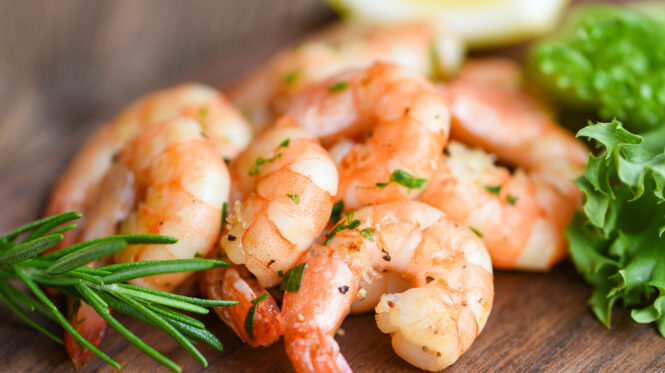
Shrimp are fished in many seas and oceans around the world, as they are popular seafood and a valuable commercial commodity. Some of the major seas where shrimp are fished include:
- The Gulf of Mexico: This is a major shrimp fishing area, with large quantities of brown, pink, and white, caught in the waters off the coasts of Texas, Louisiana, and Florida.
- The North Sea: The North Sea is home to several species of shrimp, including brown and pink shrimp. Shrimp fishing is especially popular in the coastal waters of the Netherlands and Belgium.
- The Mediterranean Sea: Considered one of the richest fishing grounds for many different types of seafood, including shrimp. They are caught off the coasts of Spain, Italy, Greece, and Turkey, among other countries.
- The Sea of Japan: Shrimp fishing is a major industry in the sea of Japan, where large quantities of various species are caught, including the kuruma and the amaebi shrimp.
- The South China Sea: This sea is a major source of shrimp for many countries in Southeast Asia, including Thailand, Vietnam, Malaysia, Philippines and Indonesia. The waters are rich in many different types, including the tiger and the banana shrimp.
- The South Atlantic Sea: This area is home to several species, including the Argentine red and the Patagonian shrimp. These are caught off the coasts of countries such as Argentina, Uruguay, and Brazil, and are an important seafood export for these countries.
These are just a few examples of the seas where shrimp are fished, but shrimp can also be found in many other seas and oceans around the world.
Although small pink shrimp (called Japanese shrimps) have been the most commonly used in the preparation of well-known dishes such as shrimp cocktail, other species are available on the market. There are also other ways to prepare them with rice besides Chinese-style fried rice. For example, you can read a good recipe for shrimp salad with rice garnish at https://riceselect.com/recipe/bangkok-rice-shrimp-salad.
How to pre-cook shrimp?
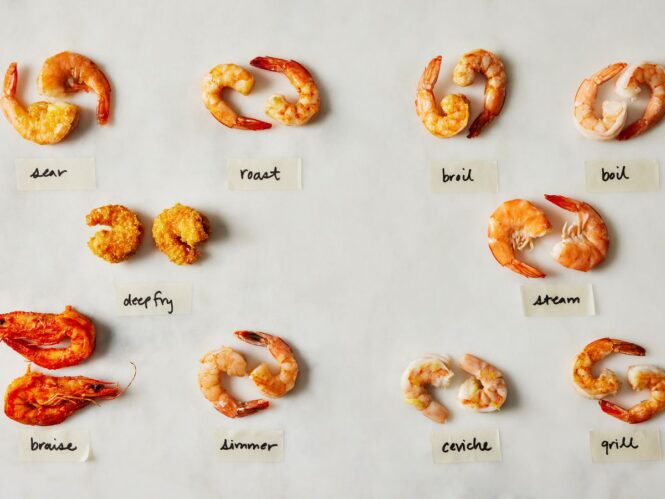
For convenience and hygiene, it is preferable to pre-cook raw shrimp before using them as an ingredient in any dish that requires seafood. To pre-cook shrimp, do the following:
- Pour water into a saucepan and bring to a boil. The water should be enough to cover all the shrimp completely.
- Once the water starts to boil, add the shrimp. If desired, add a little salt (about half a teaspoon per liter of water).
- Boil the shrimp for 20-30 minutes, until they become firm and white or light pink in color. Check every 10 minutes.
- Do not boil for more than 30 minutes, or they will start to fall apart in the water.
You can now use these shrimp to prepare any dish you like.
You can also freeze the pre-cooked shrimp for the next few days. Remember not to store them for too long, because, even frozen, they can lose their good flavor and texture.
How to clean shrimp?
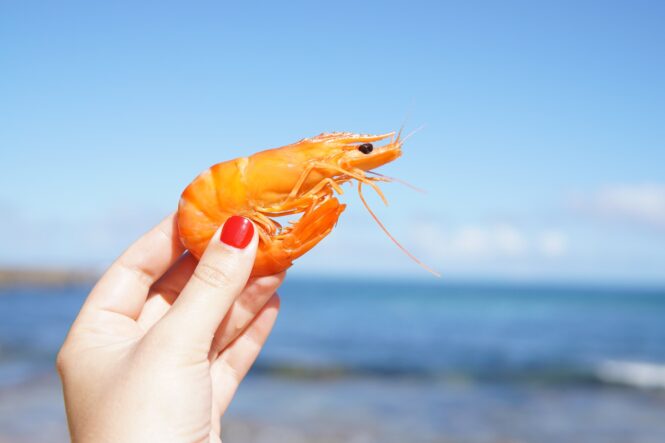
Many of the shrimp available on the market have already been cleaned (i.e. the head, legs, and vein have been removed before sale), and are even sold without the crust or shell that covers them. However, if you prefer to use fresh ones and clean them by yourself to be sure of their freshness, you should proceed as follows.
- Wash the shrimp under running water.
- If the shrimp still have heads and legs, remove them with a knife. Keep the abdomens or “tails”.
- With the help of the knife, remove the shell from the tails by making a longitudinal cut on the back.
- Wash the tails under running water to remove the shell.
- With the knife, again make a longitudinal cut in the dorsal part of the tails, and with the help of a thinner knife or a toothpick, remove the dark vein completely. This is actually the digestive tract or intestines of the animal, and should be removed for hygienic reasons, as it may contain feces.
- Re-wash the deveined tails with water.
- Dry them with paper towels.
Your shrimp are now clean, ready to be used in a delicious dish, or to be stored in the freezer.
 Imagup General Magazine 2024
Imagup General Magazine 2024
